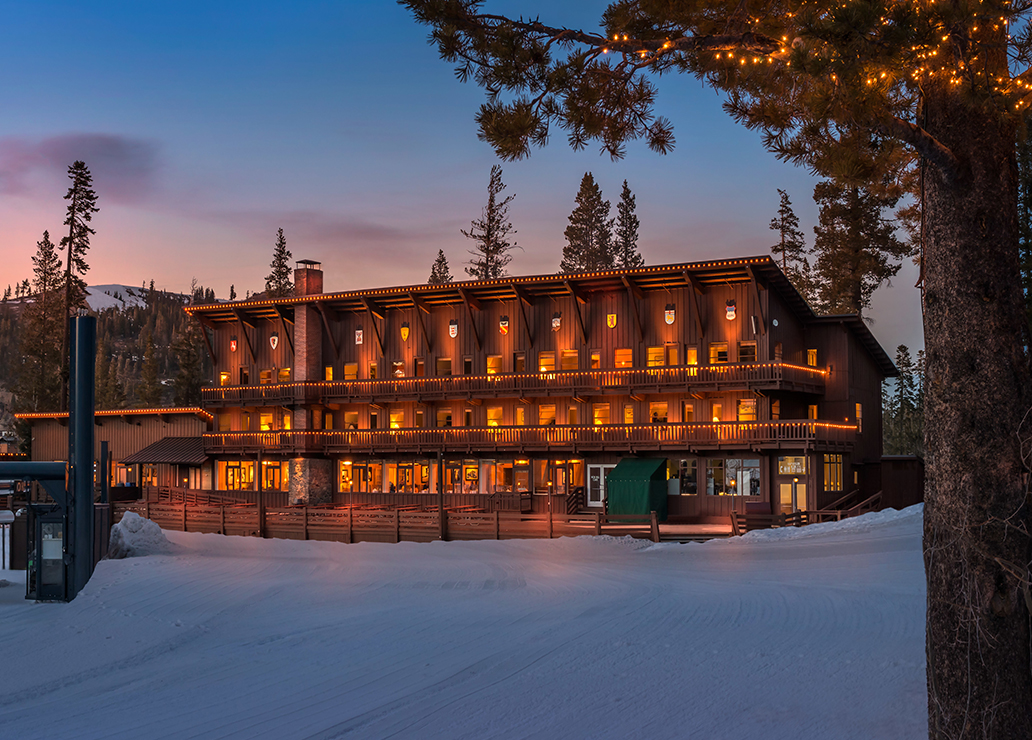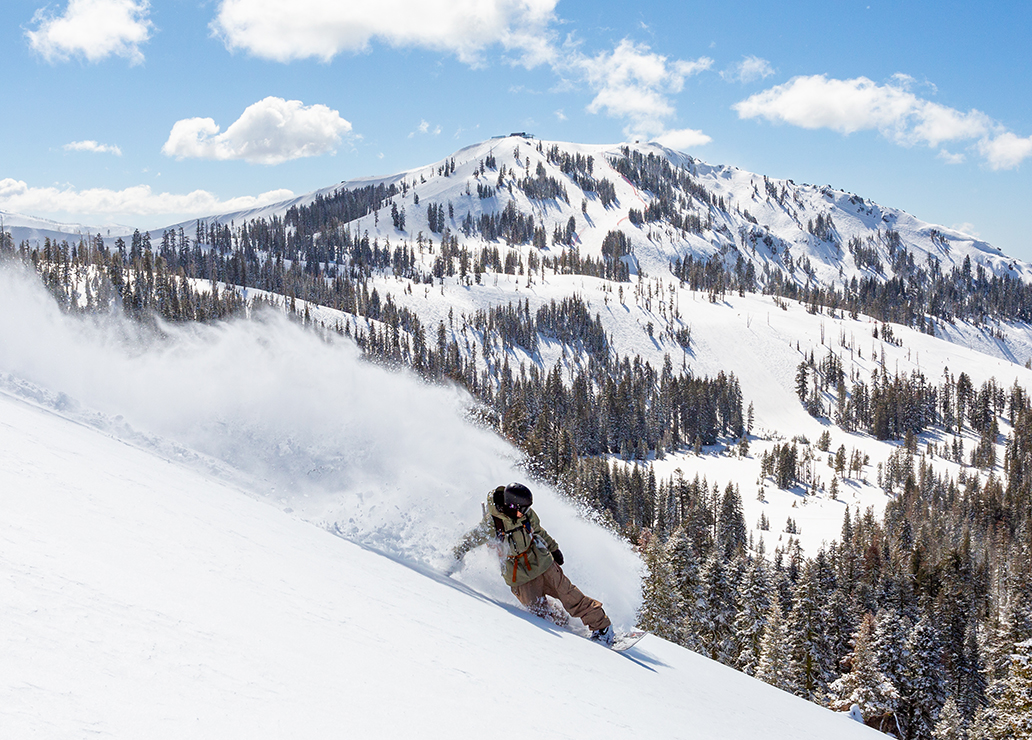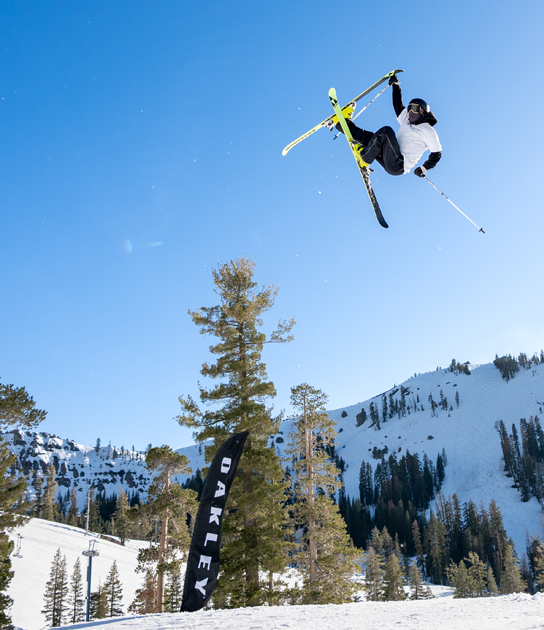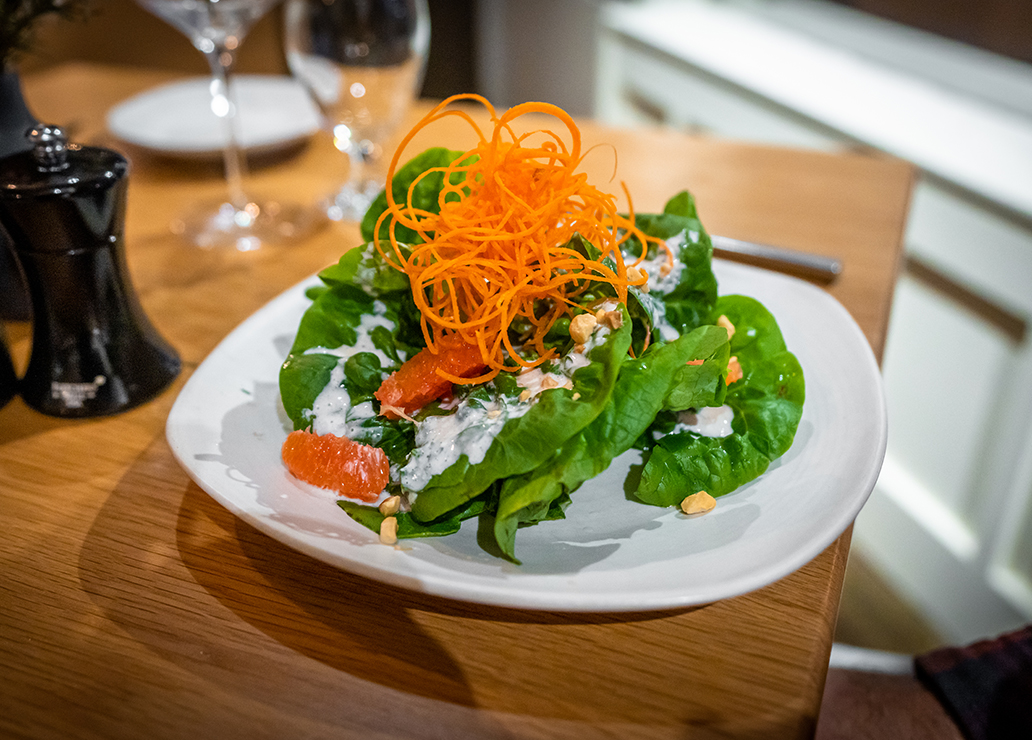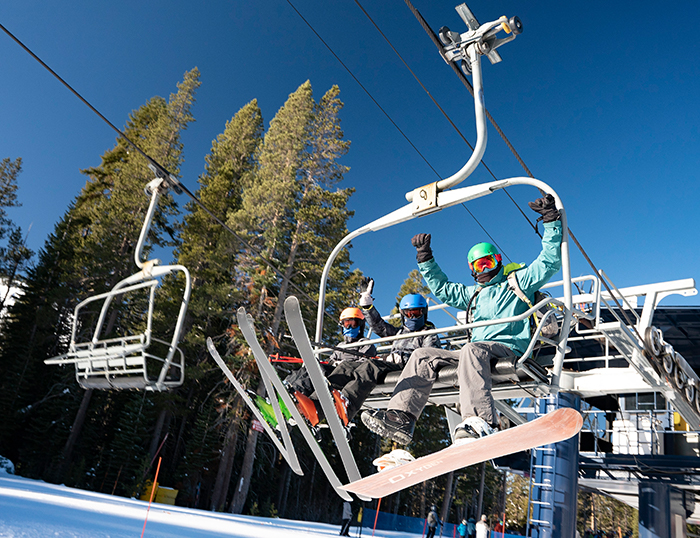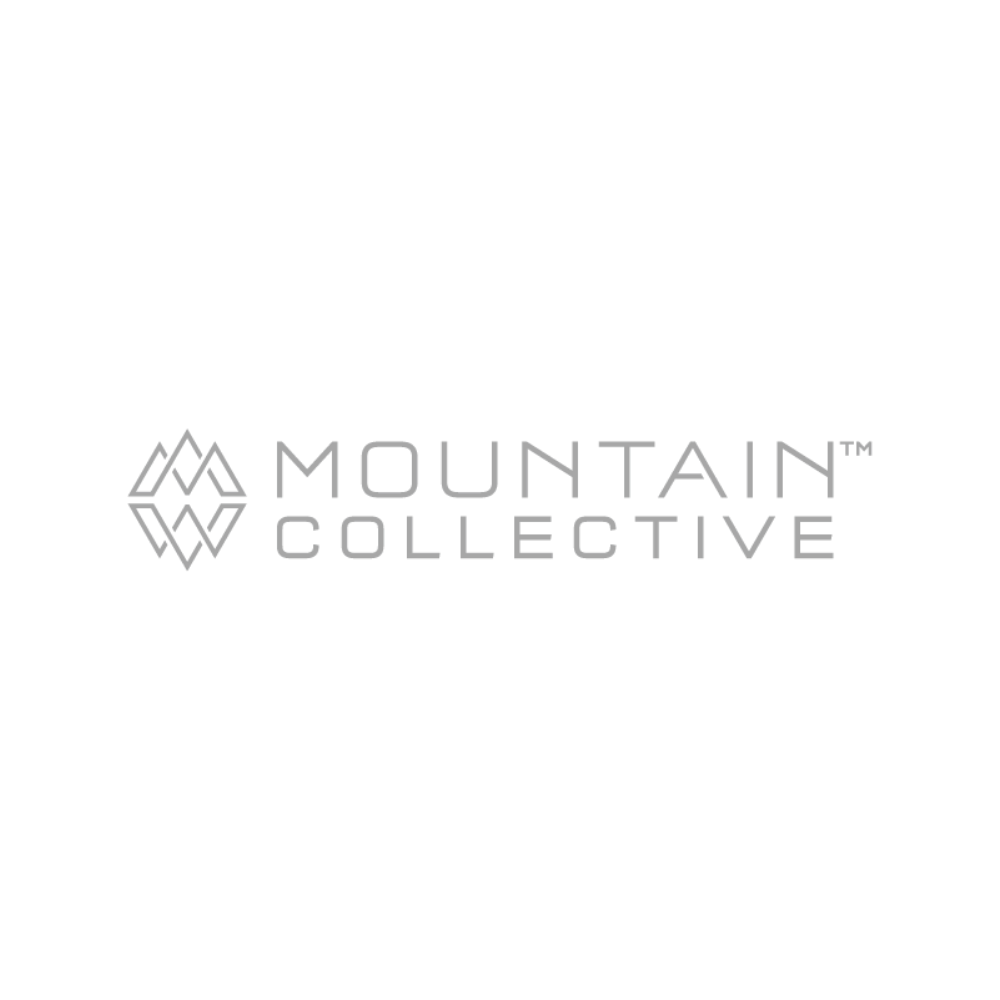What’s In A Name?
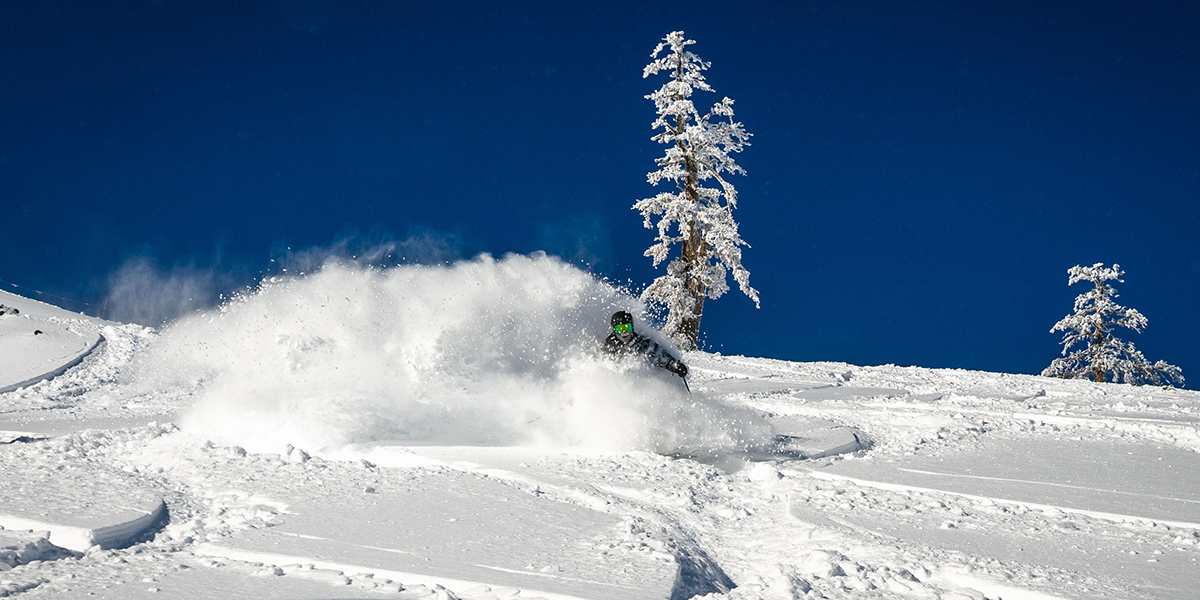
What’s in a name? A lot, actually. For many who visit Sugar Bowl, they know the rich ski history that lives here. From famous figures to historical references, founding members and local families, Sugar Bowl’s runs have a lot of meaning behind them.
This one is a bit of a longer read but honestly so worth the time. Imagine the next chair lift ride up with your buddies, you’ll be the most Sugar Bowl-savvy person on the lift! So let’s take a ski down memory lane and learn the backstory of more than 20 runs at Sugar Bowl Resort.
[this list was compiled and written by Ken Bergmann with edits by Katie Young]
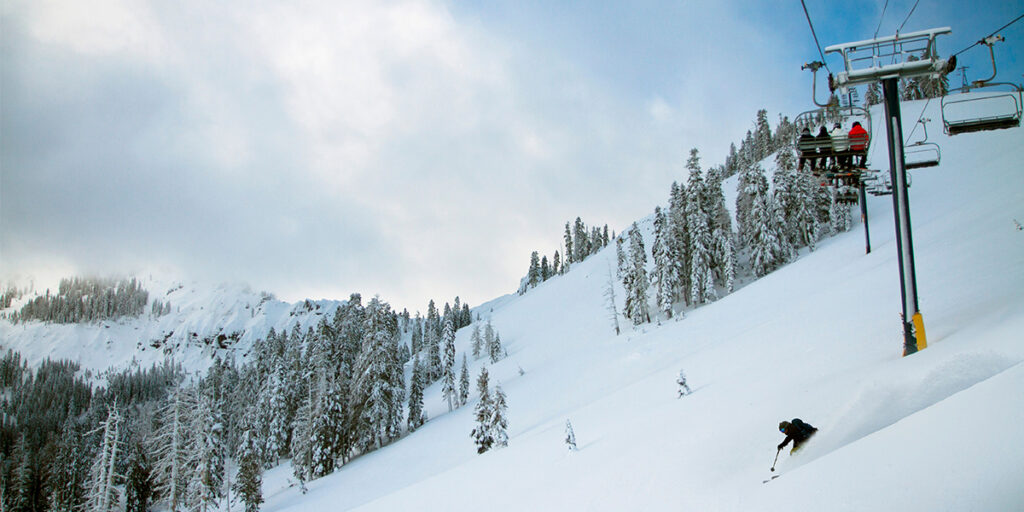
Bacon’s Gully
Named after the Bacon family, former Sugar Bowl homeowners. The Bacon house has since changed hands a couple times and was just recently resold. No, the new owner doesn’t get the run renamed after them, though it would be an interesting marketing strategy.
Carl’s Nose
Was named for Carl Goldman, the first Professional ski patroller at Sugar Bowl. Carl had a prominent nose, thus the name. Carl was the first of many distinguished patrol directors, a number of whom went on to become resort managers and in a few cases, CEO’s. Other names that followed similar footsteps, Rich Bailey and Rob Kautz.
Chick’s Challenge
Named for Sherman Chickering, one of the founding board members of Sugar Bowl. Chickering and the Henderson’s (see Henderson’s Bowl) often visited Donner Summit on Southern Pacific’s “Snowball Specials”, a train specifically designated for visiting the winter wonderland of the summit. At the time, there was no Sugar Bowl. The young skiers would ski Soda Springs and stay at the Clair Tappan lodge. Chickering is now the owner of the actual springs for which Soda Springs is named. These springs are located in the American River drainage near the Cedars.
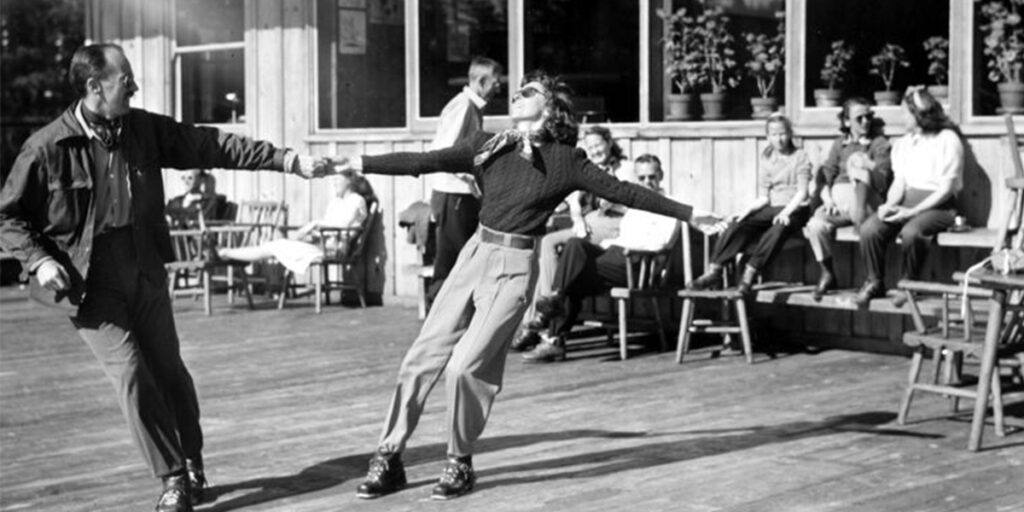
Mt. Disney
Mickey Mouse, Anaheim, Orlando, Epcot Center, Snow White, 101 Dalmatians, Sunday nights at seven, The Wonderful World Of… Founding member of Sugar Bowl. Used to have a house there. You know… the mouse guy.
Donald Duck
A famous animated character created by Walt Disney. His last feature role was as Noah’s assistant in Disney’s Fantasia 2000. Unlike his creator, Donald is still alive and lives a secluded life with his manager/wife Daisy in Laurel Canyon, California. He has three nephews, Huey, Duey and Louie, all of who snowboard and have been frequent visitors of the terrain parks.
Fuller’s Folly
Is named for John Fuller Sr., one of several founding stockholders of the resort. John Fuller Jr. can still be found skiing the run named for his father.
Graydon’s Glades
Chuck Graydon was the authority on the locations of the emigrant trails through the Sierra. He is the author of “First Wagons Over the Sierra” and assisted Sugar Bowl in determining the exact location of the emigrant trails on Judah. He made his career in the U.S. Army and spent the last 20 years researching the history and location of our early pioneers. Mr. Graydon passed away a few years ago.
Harriet’s Hollow
This one is named after Harriet Henderson, wife of Wellington Henderson. (See Henderson’s Bowl). Harriet and Wellington were instrumental in the founding of Sugar Bowl Resort and helped in getting in the first chair lift in California built. Harriet had a love of the outdoors and she was active in environmental causes, actively supporting the Alpine Winter Foundation and the Tahoe Rim Trail among many other causes.
Hellman’s
Named for Sugar Bowl’s lead investor Warren Hellman. Mr. Hellman was a long-time stockholder and a highly respected investment banker in San Francisco. He was known as a very nice guy and a strong supporter of the SBSP.
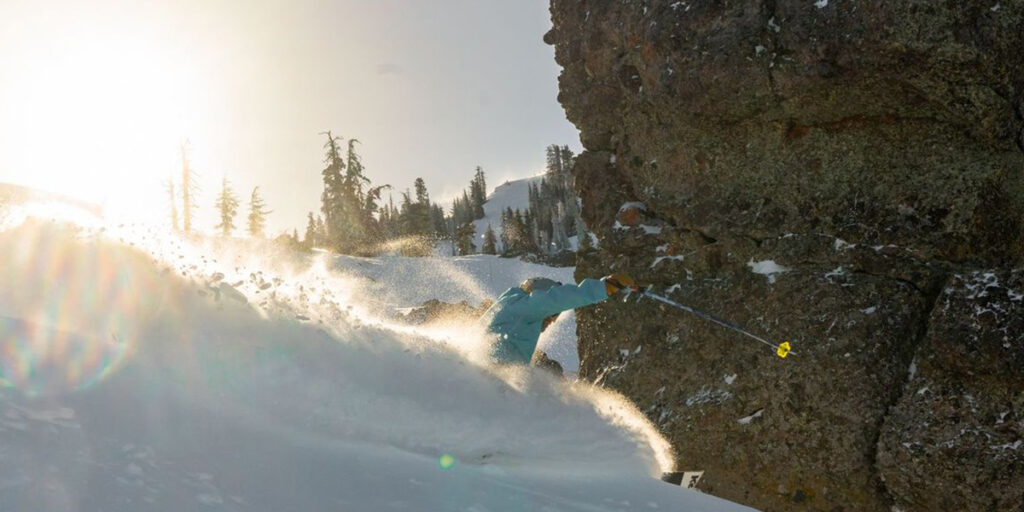
Henderson’s Bowl
Named for the Henderson Family, original founders and longtime Sugar Bowl residents. Sugar Bowl has seen a number of Hendersons on the slopes. Wellington and Harriet Henderson were early ski pioneers on Donner Summit. They would often visit prior to Sugar Bowl’s inception and take lessons from Bill Klein through the Sierra Club at Clair Tappaan Lodge. The Henderson family has a long and respected relationship with Sugar Bowl and the many people who reside there.
Jerome Hill
Is named for Jerome E. Hill, heir to James J. Hill, builder of the Great Northern Railroad. Independently wealthy, Jerome was the epitome of the Renaissance man. He spoke fluent French, German, Italian and conversational Chinese and Russian. An artist and photographer, his work has been displayed at the Berryhill Gallery in New York and the Legion of Honor in San Francisco. His black and white photographs hung on the walls of Sugar Bowl for many years and he designed the original Sugar Bowl Logo. Jerome is best known for building the Magic Carpet Gondola in 1953. He was the sole owner and charged the public $0.75 for a one-way passage. He owned the Magic Carpet until his death in the mid 1970’s when he willed it to the Alpine Winter Foundation, who later sold it to Sugar Bowl.
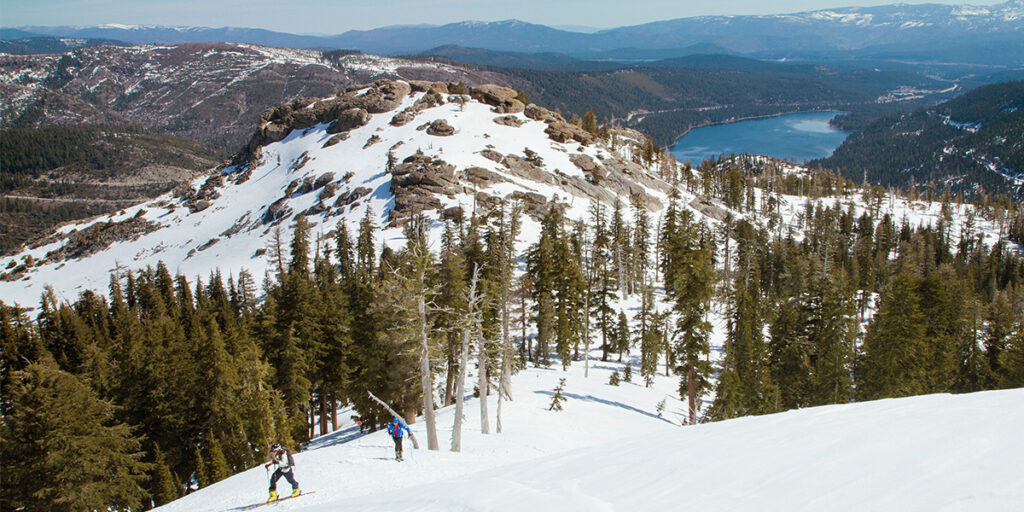
Mt. Judah
Was named for Theodore Judah, the engineer who surveyed the original route through the Sierra for the Southern Pacific Railroad. He was known as “Crazy Judah” reflecting the local population’s opinion of his proposed route. Judah lived long enough to get the “Big Four”, Leland Stanford, C.P. Huntington, Mark Hopkins, and Charles Crocker to underwrite the construction costs, but soon became disenchanted with their management. While on a trip to New York to look for new investors, he contracted malaria during the Panama crossing and died. He never witnessed the completion of his dream.
Judah’s original route consists of the abandoned tunnels next to the Judah entrance. The tunnel closest to the Judah Portal is tunnel #6, the longest of all the tunnels blasted by the Chinese laborers. In addition to digging from each end, the crews also blasted a shaft down the middle and worked towards the ends. The crews worked through the winter to complete the project. In the last few decades a new route was blasted straight through Mt. Judah, this tunnel begins around the midpoint of the gondola. From the top of Mt. Judah you can see the trains enter and exit each end of the new tunnel.
Ken’s Couloir
This is named for Ken Kirshemann, Patrol Director in the late 70’s, who had the first descent. A native Alaskan, Ken left patrolling for his homeland and a career as a commercial fisherman.
Bill Klein’s Schuss
Named for Bill Klein who started a ski school on Donner Summit with his brother Fred in 1936, three years before Sugar Bowl was founded. He eventually opened a ski shop at Sugar Bowl and continued to remain active in the Ski School. The Village Rental Shop was once Klein’s Ski Shop. Bill Klein has had a long and highly respected partnership with Sugar Bowl.
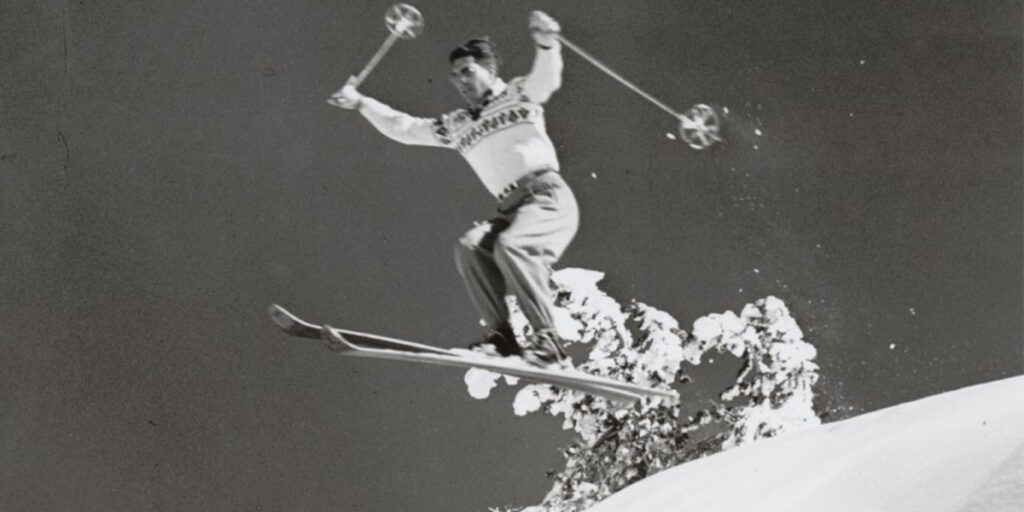
Lonesome Pine
Used to have a single large pine tree bisecting the run. The tree was home to one of several field phones used to call the top lift shack for patrol assistance. Prior to the field phones, the patrol would station a patroller at the top of Disney’s nose with a signal flag who relayed messages from the hotel deck to the top lift shack; primitive but effective. The run’s name has outlasted the lone pine, which died in the 60’s. The stump was removed in the 70’s when Lonesome Pine was widened.
MacTavish
Named by Don Schwartz, general manager in the 60’s after one of his close friends, Gordon McIntosh (MacTavish was his common nickname). Gordon and Alice McIntosh helped build and then shared what is now the Jones Cabin in East Village. Both families were founding stockholders in Sugar Bowl.
Mad Dog
Another run named by former Sugar Bowl manager Don Schwartz. Cut in the 70’s, he thought since it was a twisted, off fall-line trail, people would ski it like a “mad dog.”
Market Street and Montgomery
These trails were named for the famous intersection in the heart of San Francisco’s financial district and the employment hub for many of Sugar Bowl’s founders. Odd that the two runs never intersect.
Nancy’s Couloir
Is named for Nancy Hellman Bechtle, former Chairman of the Board of Sugar Bowl Ski Corp. Nancy was a long time supporter of the Sugar Bowl Ski Team and was a key figure in the group’s continued success. She passed away recently just 2021 and her energetic presence is missed by all, but her legacy will always live on at Sugar Bowl.
Otterson’s Scar
Named for Chuck Otterson, Sugar Bowl’s mountain manager circa 1974. Chuck Otterson offered former Sugar Bowl president Rob Kautz his first job. The “scar” was created when Chuck removed the trees with a chainsaw. No EIR’s. no EPA, no NFS, just Chuck and his Chainsaw… ah the good ol’ days.
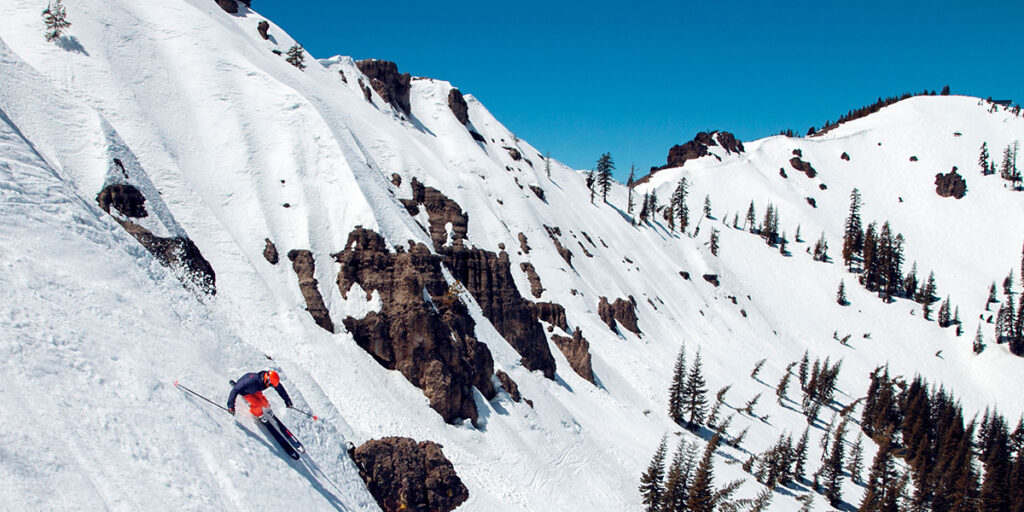
’58
Is named for a four day storm in March of 1958 that deposited 11 feet of snow on the Summit. The snow released along the entire 58 ridgeline, ripping out the trees and thus cutting the run. The avalanche continued down the Silver Belt Gully, tearing out two of the Lincoln lift towers, smashing through the bottom terminal and into the motor room, bending the bull wheel.
Perko’s
Was named in the 70’s by a patrolman named Don Heapes. Don is responsible for naming all the little runs west of Staircase: Hidden Gully, Resolution, Pastoral, etc.
If you’re interested in more about the history of Sugar Bowl, check out the link below!

